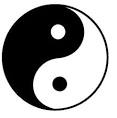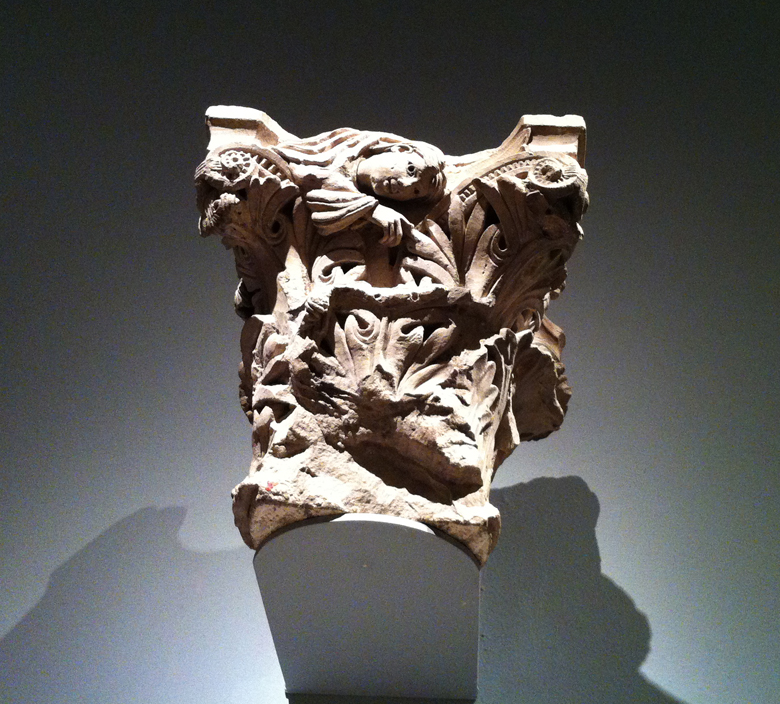LXXX
Hobosexuals
False colors, false semametaphors.
Going to meet Deman.
Hobosthenes hops another freight, writes horos on a dusty boxcar wall.
WITHOUT A TITLE
The two of them were left so long alone,
so much in un-love, without a word to spare,
what they deserve by now is probably
a miracle – a thunderbolt, or turning into stone.
Two million books in print on Greek mythology,
but there’s no rescue in them for this pair.
If at least someone would ring the bell, or if
something would flare and disappear again,
no matter where and no matter when,
no matter if it’s fun, fear, joy, or grief.
But nothing of the sort. No aberration,
no deviation from the well-made plot
this bourgeois drama holds. There’ll be a dot
above the “I” inside their tidy separation.
Against the backdrop of the steadfast wall,
pitying one another, they both stare
into the mirror, but there’s nothing there
except their sensible reflections. All
they see is the two people in the frame.
Matter is on alert. All its dimensions,
everything in between the ground and sky
keeps close watch on the fates that we were born with
and sees to it that they remain the same –
although we still don’t see the reason why
a sudden deer bounding across this room
would shatter the entire universe.
Wisŧawa Szymborska, Poems: New and Collected. Stanislaw Baranczak and Clare Cavanagh, trans. New York: Harcourt, Inc., 1998.
As far as the human body is concerned, the scholar tells us, all the artist has to do is reproduce the same, prescribed form: the elements that compose the face, the torso, the limbs, and so forth. But for a rock or clouds, all froms are possible, so long as an internal coherence imparted to this rock or to that cloud makes this cloud or that rock effectively possible. Because it does not vary, this internal coherence is what makes a rock a rock, or rather – not to slip into the vocabulary of essence – it is what makes a rock “serve” as a rock, “count” as a rock; produces (pictorially) the effect of a rock. What is translated here as “internal coherence” is the cardinal notion in classical Chinese thought (the notion of li) and goes hand in hand with the notion of energy-breath (qi) in the same way that we know the Greek idea-Form goes hand in hand with matter (eidos/ ulē). Where, then, does the difference lie? Both illuminate by their intelligibility, but one from the standpoint of being (essence), and the other from that of processes. The Greeks’ idea-Form belongs to quite a different order of reality from matter and, serving as a model for it, informs matter from this Outside that transcends it, whereas the Chinese principle of internal coherence is inseparable from the energy it organizes. The energy’s constancy hinges on this regulating capacity, which enables it to become actualized by “taking shape” in a viable manner… Consequently, to the Chinese painter, depicting a rock is a matter not of representing it by imitating its form, but of seeking out the energetic (“vital”) principle that causes a rock to deploy as a rock. What the painter reproduces is the logic inherent in this process (the “that by which it is such” is the classic Chinese expression): making it take shape – though “making” is overly imperative, and it would be more accurate to say “allowing” it to take shape – in accordance with the principle of coherence, which will ensure that whatever form the representation eventually takes, it will effectively be that of a rock. [Jullien, …Nude, pp. 72-74]
But can one speak of the seam where rubber meets road? Jullien stresses the Greeks’ “liking for boundaries… which give Form its informing power (see the correlation between horos and eidos in Greek): form is the ‘enveloping boundary,’ and beauty is a demarcation (determination) by form. Forma designates at once the beauty of a thing and the limit that differentiates it from any other by the contour that circumscribes its matter. Forma et distincta, says Saint Augustine of beauty: beauty appears when the flowing in-finitude of matter is immobilized by its form, which unifies it and thereby draws it definitively from confusion…
“Forma et distincta can truly be said of the beauty that is proper above all else to the nude.” [ibid. p. 74-75]
But what of the ruined-rock nude: the nude that is no longer “uni-form – a globally identical and therefore fixed form allowing no leeway for improvisation”? What of the nude which has been improvised upon by forces internal, external, and processive – the nude that, like all rocks and clouds, is forever “taking” and “leaving” shape?
All resonation arises from, and returns to, the mother and child.
The naked. The dead. The really most sincerely dead.
Timely death: the big harmony.
Manifest Desenex®
Ah, but wasn’t he or she, or that eroded lion always rock?
Does not the separation dissolve in, pace Albert Speer, ruin value?
Does not the very function change?
[For Speer’s “theory” of ruin value, q.v. Inside the Third Reich. Translator unknown. New York: Macmillan, 1970. pp. 93, 214, 661]
And are not process and function bound together like the tai ji “fish”?
Symplegma. Wrestling, copulating, embracing, endlessly engaged.
And whether the stone nude, or column, or capital is newly formed, eroded or shattered, coherence inheres in spirals. Dust dragons even.
Warning: slippery language ahead
Love thy neighbor’s wife as thyself
Surprise and demand
So many young lives lost to brag racing. Or race bragging
Don’t forget the Connallys
Age of Discontinuity
The redoubling of service, uh, surface, as alibi for structural failure
What do you call a dried-up river?
Ex-stream.
Loose livers send shivers
All the Jung dudes
And now it’s time to play What’s My Archetype?
So much attitude. So little beatitude.
Shifty fades of gaze
Codeine: run all round my spleen
And glove is all you need
The story gets storier
America only works because it’s stupid. This thought occurs as you read the opening sentences of F. Scott Fitzgerald’s story “I Didn’t Get Over,” first printed in Esquire’s October, 1936 issue:
I was ‘sixteen in college and it was our twentieth reunion this year. We always called ourselves the ‘War Babies’ – anyhow we were all in the damn thing and this time there was more talk about the war than in any previous reunion; perhaps because war’s in the air once more…
So you turn to Chekhov’s “Mire”:
Tut, tut, tut!… I see from your eyes!
A story in which a Jewess plays no small part.
I was born at Taganrog in the year 1860. In 1878 I completed my studies at the Taganrog gymnasium. In 1884 I completed my studies at the University of Moscow in the faculty of medicine. In 1888 I gained the Pushkin prize. In 1890 I made a journey to Saghalin an back by sea. In 1891 I made a tour in Europe, where I drank excellent wine and ate oysters.
I began to write in 1879 in The Dragon-Fly. My most important work is as follows: Motley Tales, Gloomy People, and the story, The Duel. I have transgressed also in the dramatic line. I have been translated into all languages with the exception of foreign ones. However, I have long since been translated by the Germans. The Czechs and Serbs also approve of me. Even the French do not hold aloof from a mutual relationship.
…With my colleagues, both physicians and authors, I maintain excellent relations. I am unmarried. I should like to get a pension. Medicine is my occupation, and to such a degree, in fact, that some time during the year I perform more forensic medical dissections than I once completed in two or three years. Of authors I prefer Tolstoy and of physicians Zakharin.
However, all this is rubbish. You write what suits you. If it is not facts, then replace it with lyrical matter…
Said Anton Pavlovich Chekhov to the journalist Tikhonov in 1904. From the preface to Rothschild’s Fiddle and Other Stories. New York: Boni and Liveright, Inc. Published some time after 1916; no date listed. Nor translator for the preface.
You’ve never seen the qi of the city so disordered.
As though all five elements, or powers, were determined to exceed their boundaries at once.
The last super
And other tales
Noel Coward was a charmer
As a writer he was Brahma
Velvet jackets and pajamas
The Gay Divorcée and other dramas
There ain’t half been some clever bastards
(Lucky bleeders, lucky bleeders)
There ain’t half been some clever bas-tards
Van Gogh did some eyeball pleasers
He must have been a pencil squeezer
He didn’t do the Mona Lisa
That was an Italian geezer
There ain’t half been some clever bastards
(Lucky bleeders, lucky bleeders)
There ain’t half been some clever bas-tards
Einstein can’t be classed as witless
He claimed atoms were the littlest
When you did a bit of split-em-ess
Frighten everybody shitless
There ain’t half been some clever bastards
Probably got help from their mum
(Who had help from her mum)
Ain’t half been some clever bastard
Sang Ian Dury and the Blockheads, oncet.




